All About Trapezoids
Discover what trapezoids are, how to measure area, volume and perimeter, and real-life examples!

Author
Katie Wickliff
Published:
May 2025
Key takeaways
- • Trapezoids are quadrilaterals with two parallel sides.
- • Trapezoids are easily found in the real world–you just have to keep your eyes open!
- • Students will learn to measure the diagonals of a trapezoid and calculate the area and perimeter
While children start learning to identify basic shapes as early as kindergarten, trapezoids are usually introduced in 3rd or 4th grade. Trapezoids are a little trickier to recognize than a square or a triangle, but they pop up quite often in the real world.
In this guide, we’ll define trapezoids, share real life examples, and explain a trapezoid’s parts and properties. We’ll also show you how to measure a trapezoid and calculate the area, volume, and perimeter. Finally, our practice problems (with answers!) allow your student to test their knowledge and build confidence.
What is a trapezoid?
A trapezoid is a flat closed shape with four straight sides, also called a quadrilateral. Two of these sides are parallel.
It’s important to note that the United States and the United Kingdom have opposite definitions for trapezoids! For example, the United Kingdom does not use the word “trapezoid”. Instead, they use the term trapezium. The United States uses trapezium, too–but only to refer to a quadrilateral with no parallel sides.
This guide will refer to the US definition of trapezoids. Ready to learn all about trapezoids?
Trapezoid examples in the real world
While not as easy to spot as other shapes, like a circle or square, trapezoids are everywhere! Here are some real-world examples:
- Handbags: some have a trapezoid shape, with the top shorter than the base
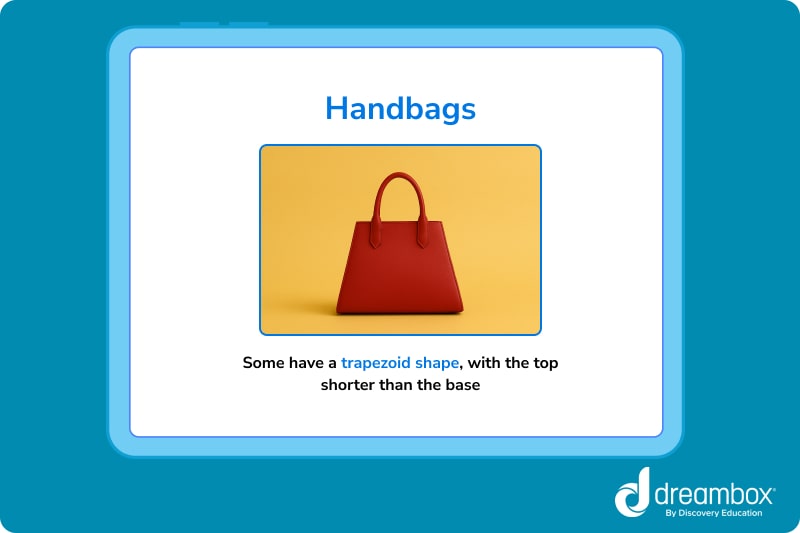
Staircases: when viewed from the side, the profile of some staircases forms a trapezoid
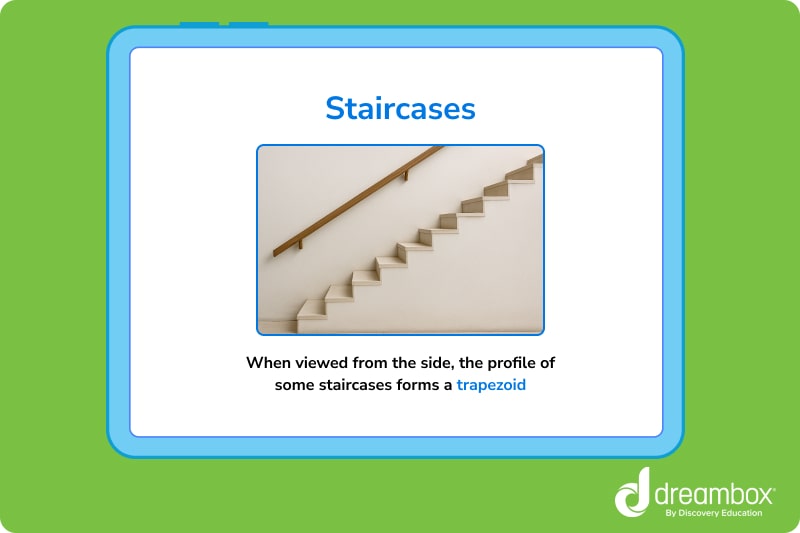
Lampshades are often in the shape of trapezoids
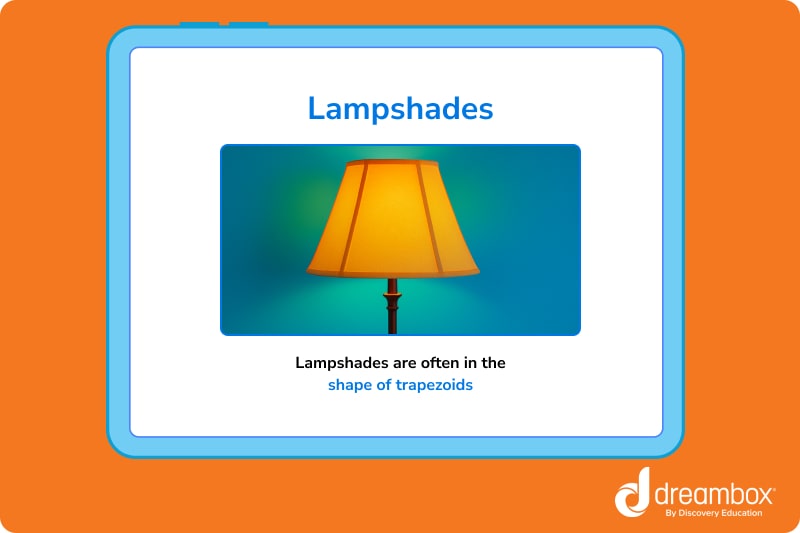
Bridges: the profiles of some bridge supports are shaped like a trapezoid to help distribute weight
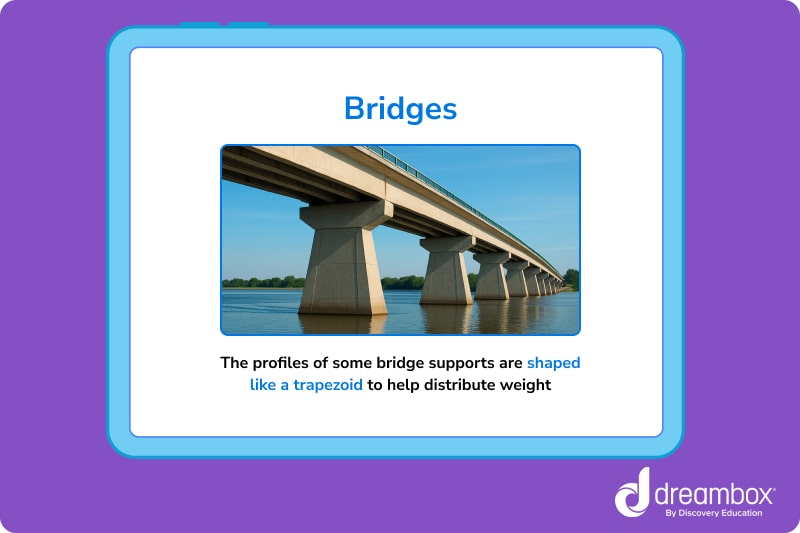
Table of contents
Access more math practice with DreamBox
Turn math into playtime with DreamBox Math
DREAMBOX MATH
Get started for FREE today!

Other names for a trapezoid
Trapezoidal Shape: Describes something shaped like a trapezoid; i.e “trapezoidal desk”
Quadrilateral with One Pair of Parallel Lines: Describes some of the properties of a trapezoid
Right, Isosceles, or Scalene Trapezoids: Describes types of trapezoids based on their angles or side lengths.
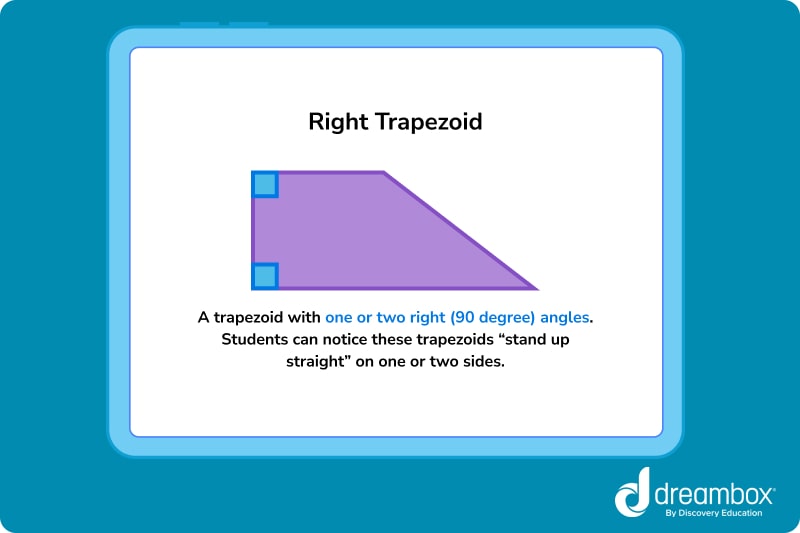
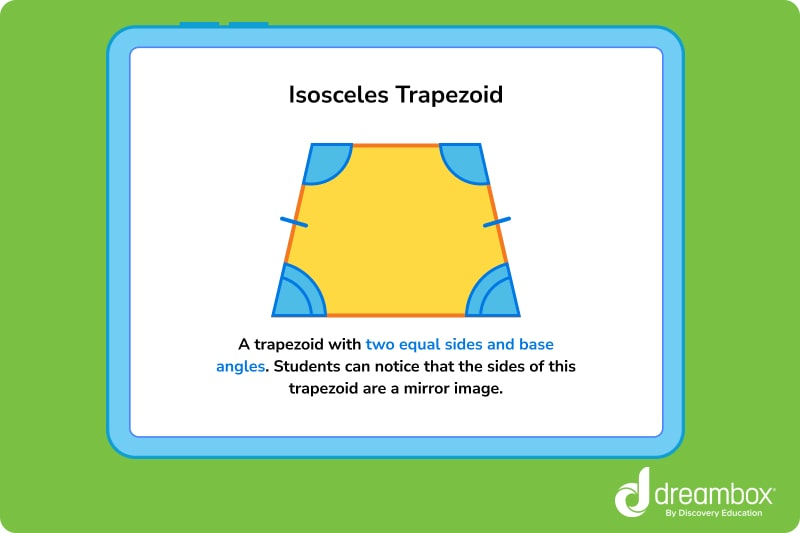
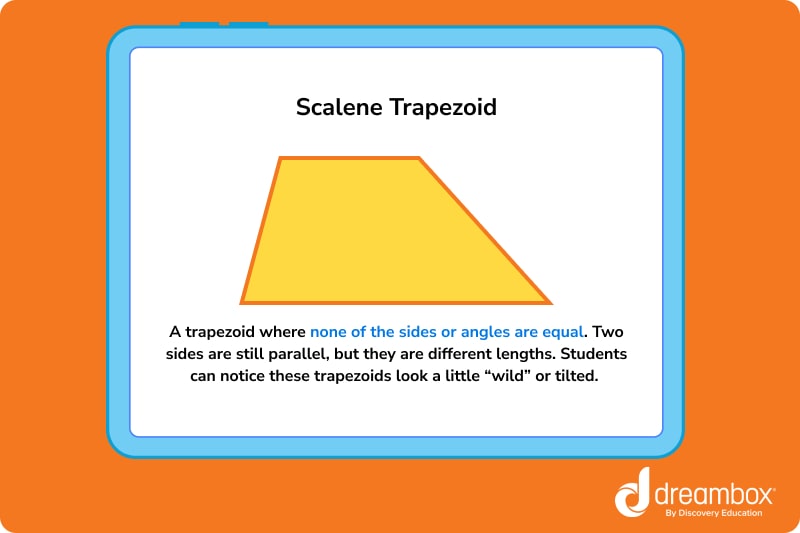
Properties of a trapezoid
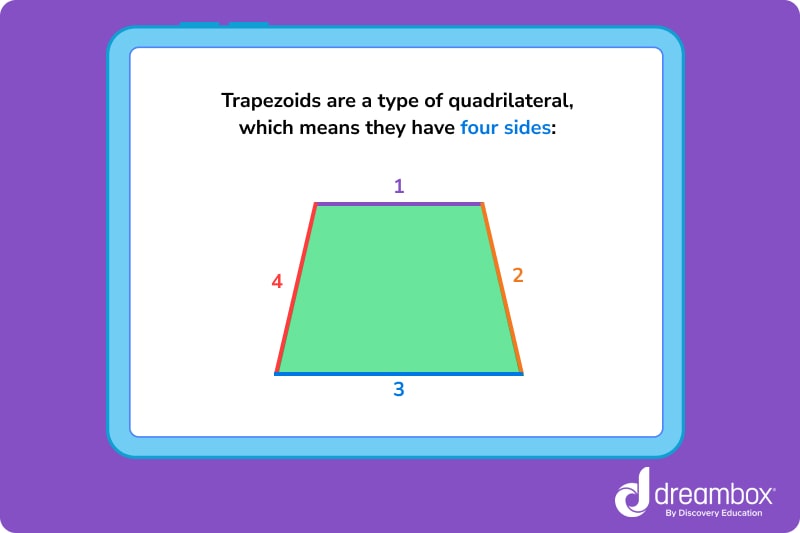

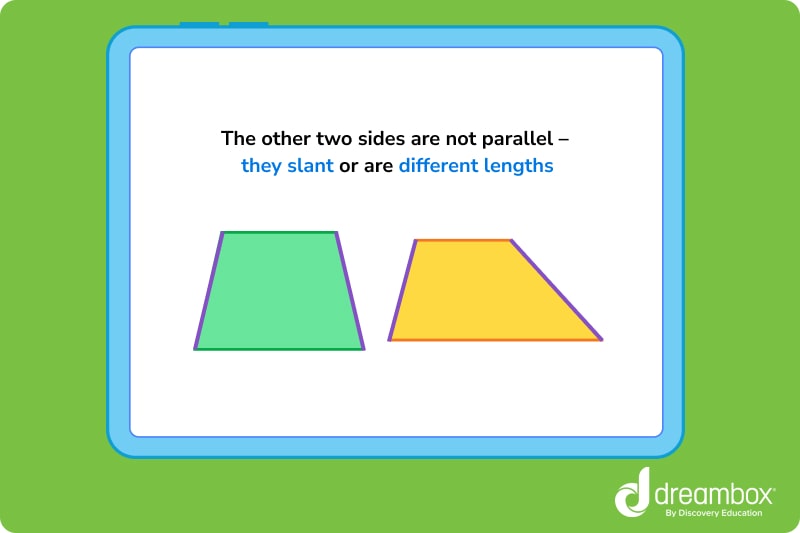
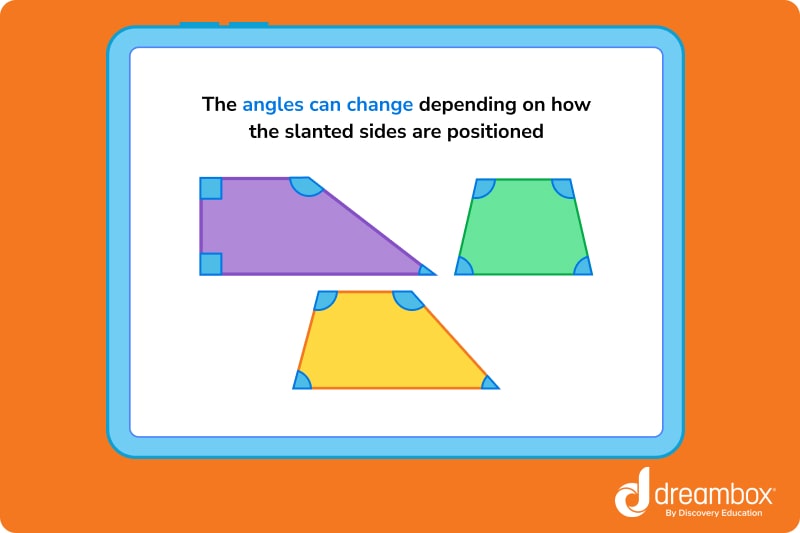

The math program that drives results
Get started today!
DreamBox adapts to your child’s level and learning needs, ensuring they are appropriately challenged and get confidence-building wins.
Parts of trapezoids
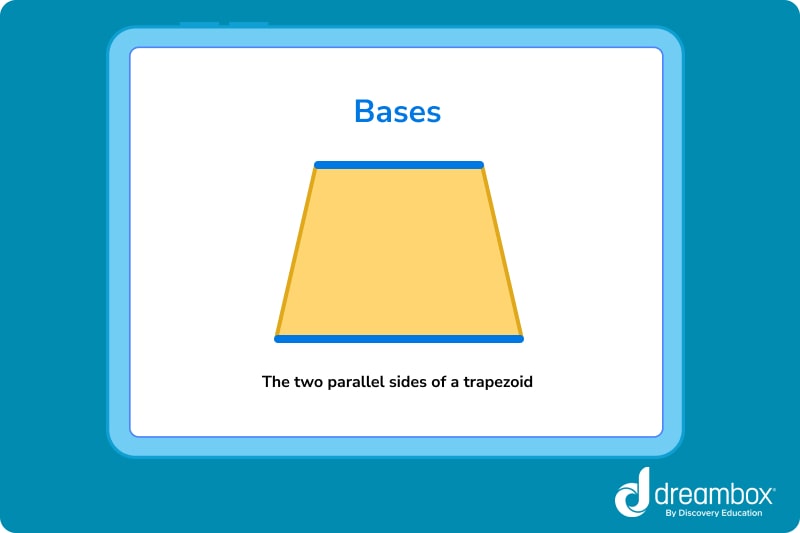
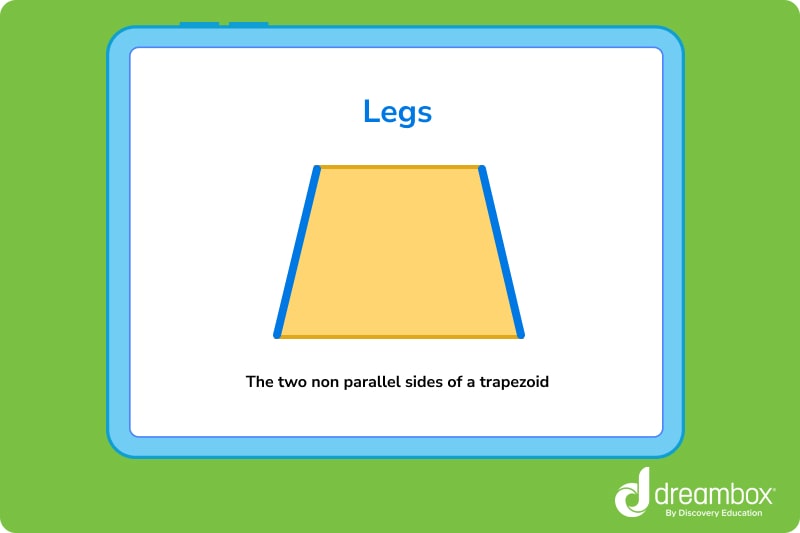
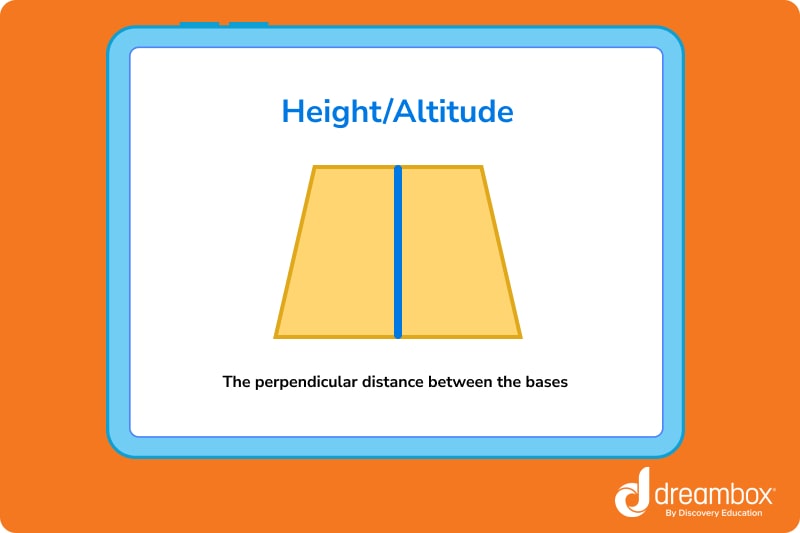
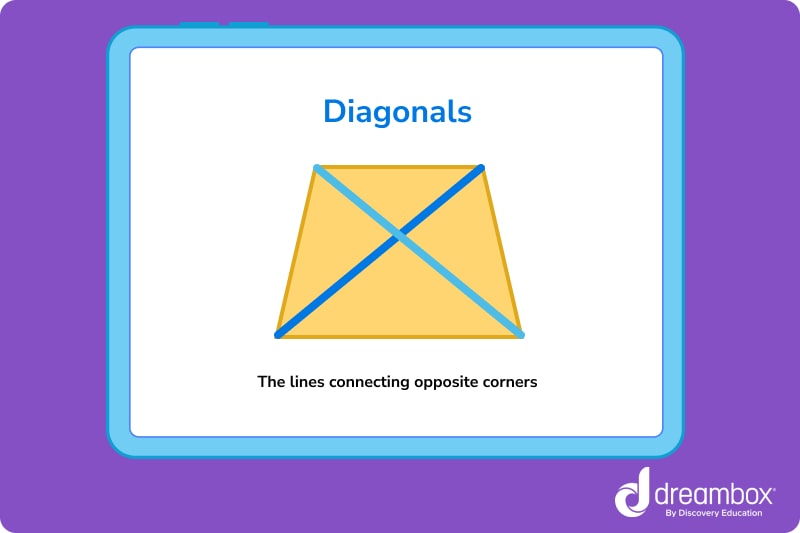
What can we measure using the parts of a trapezoid?
Perimeter of a trapezoid
The perimeter of a trapezoid is the sum of all its sides. You can find the perimeter of a trapezoid by adding all four sides together.
Perimeter = Side 1 + Side 2 + Side 3 + Side 4
Area of a trapezoid
Use the following trapezoid formula to find the area: Add the two bases together, then divide the sum in half, then multiply by the height.
Area = ½ × (Base 1 + Base 2) × Height
Diagonals
You can measure the two diagonals– the straight lines that connect the opposite corners–by using a ruler.
- Line up the ruler from one corner to the opposite corner, across the shape
- The number on the ruler is the length of the diagonal
- Repeat for the second diagonal
Let's practice together
1. A trapezoid has the following lengths:
Top: 6 inches
Bottom: 10 inches
Left slanted side: 5 inches
Right slanted side: 7 inches
What is the perimeter of the trapezoid?
To find the answer, we add up each side, like this:
6+10+5+7= 28
The perimeter of the trapezoid is 28 inches
2. A small handbag is shaped like a trapezoid. These are the measurements:
Top: 6 inches
Bottom: 10 inches
Height (distance between the bases) 4 inches
What is the area of the handbag?
To find the answer, we use our area formula:
Area = ½ × (Base 1 + Base 2) × Height
First, add the bases:
6 + 10 = 16
Then, multiply that sum by the height:
16 × 4 = 64
Divide the product in half:
½ of 64 = 32
The area of the handbag is 32 square inches. It is also correct to say 32 inches squared.
Practice problems
Ready to give it a try? If you get stuck, there’s an answer sheet below. or for even more practice, be sure to check out Dreambox, an online math program that uses games and interactive activities to strengthen your child’s math skills.
1. A Right trapezoid has at least one right angle
True
False
2. A Scalene trapezoid has sides that look like mirror images of one another
True
False
3. An Isosceles trapezoid has one curved side
True
False
4. The perimeter of a trapezoid is the sum of all its angles
True
False
5. Fill in the blank
The parts of a trapezoid are the bases, legs, ______, and diagonals
6. Fill in the blank
Trapezoids are a type of quadrilateral, which means they have ______ straight sides
7. Find the area of the trapezoid
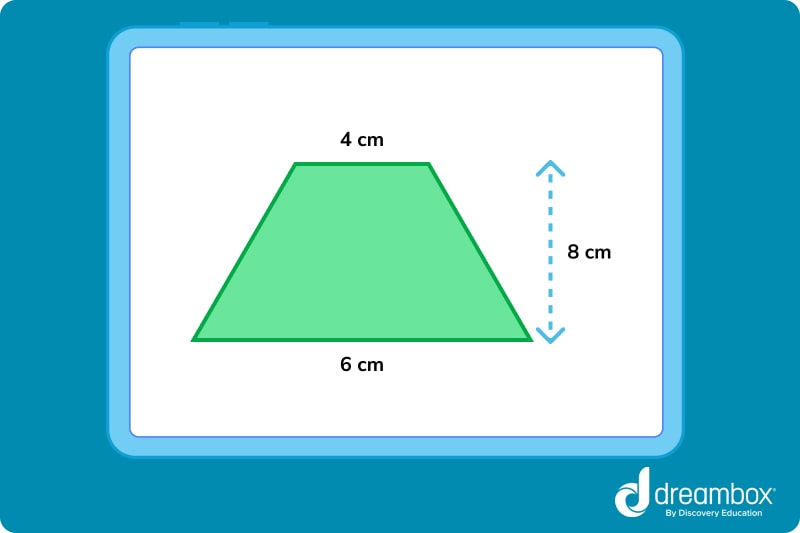
8. Find the perimeter of the trapezoid
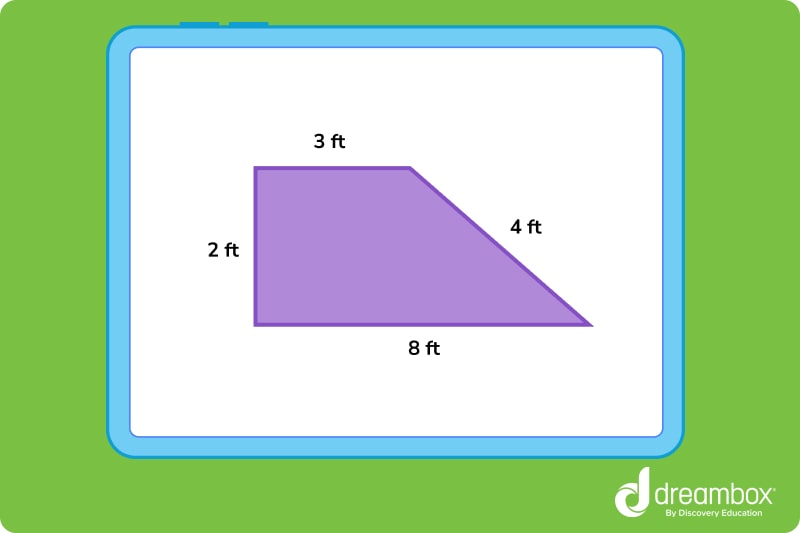
9. Piper is measuring the lampshade in her room. The top side is 6 inches long, the bottom is 10 inches long, and the height is 4 inches.
What is the area of Piper’s lampshade?
10. Mr. Lee’s class is building a school garden bed in a trapezoidal shape. The top side of the garden is 6 feet long and the bottom side is 9 feet long. The two sides each measure 7 feet.
What is the perimeter of the garden?
Parent guide
1. True
2. False
3. False
4. True
5. Height
6. Four
7. Area = ½ × (Base 1 + Base 2) × Height
Area = ½ × (4+6) x 8
Area = ½ × 10 × 8
Area = 5 x 8
The area is 40 inches squared
8. Perimeter=(3+4)+(8+2)
Perimeter= 7+10
Perimeter= 17
The perimeter is 17 feet
9. Area= ½ x (6+10) x 4
Area= ½ x 16 x 4
Area= 8 x4
The area is 32 inches squared
10. Perimeter= (6+9)+(7+7)
Perimeter= 15+14
Perimeter= 29 feet
FAQs about trapezoids
A trapezoid is a closed shape with four sides, two of which are parallel. A trapezoid is a type of quadrilateral.
The three types of trapezoids are Right, Scalene, and Isosceles.
A Trapezoid Bone is a small bone in the wrist.
An example of a trapezoid is a theater stage: the front and back are parallel, with the front being wider than the back.
Take at home math practice to the next level
Empowering parents and educators to make math practice more impactful. Plus, your kids will love it.
